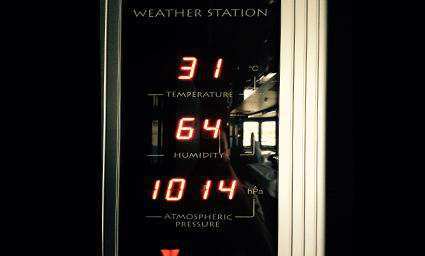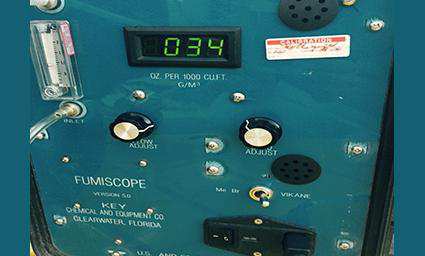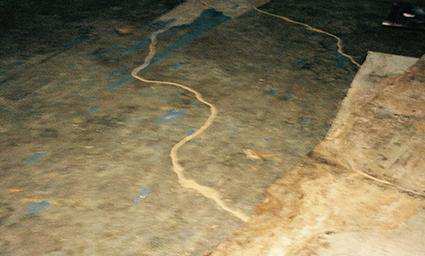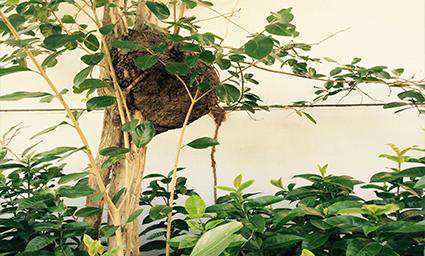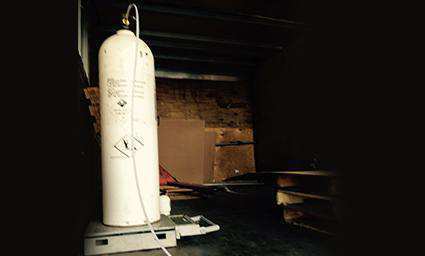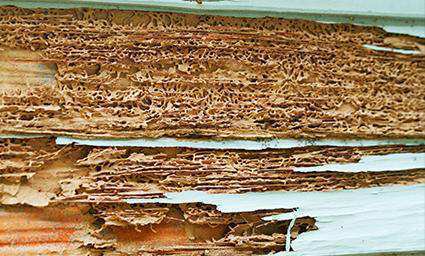Fumigation is the act of introducing, into a tightly sealed space, toxic compounds (biocidal fumigants), in a manner that disperse quickly into the gaseous or vapor state, in sufficient concentration, dependent on temperature and humidity, for sufficient time to be lethal to a targeted pest (insects, rodents, etc.).
This highly specialised method is aimed to target pests and involves, unique and to a large extend irreplaceable, biocidal fumigants, which amongst others are also applied where no other method of pest control is feasible.
Due to handling particularities and the high toxicity of fumigants, safety measures of paramount importance are enforced. Therefore, only qualified professionals with many years of practice in the field are capable of providing this service adequately and safely.
How does it work?
Fumigants penetrate pests (arthropods, rodents) via the respiratory system.
Insects (and other arthropods) breathe via tiny holes (spiracles), located along the sides of their bodies. When a fumigant is introduced, it attacks their nervous system causing excitation, followed by paralysis and eventually death. At high temperatures, insects are more active, their breathing more vigorous and their metabolism is increased, thus rendering them more susceptible to the fumigants, which can penetrate at all life stages of insect development. However, pupal and especially egg stages, require much higher concentrations or increased exposure time.
Fumigation particularities
Fumigation treatments present the following important advantages:
Immediate extermination of all pests in any stage of their development.
Their coverage extends to all areas of the sealed space, even in very difficult to reach or inaccessible areas where only a gas can penetrate.
In fumigation there is no residual effect after aeration. This can be considered, as an advantage, e.g. when applied to food commodities, but also as a disadvantage, e.g. when residual protection is required due to high risk of re-infestation.
Fumigation treatments present the following important disadvantages:
Damage and deterioration of certain materials and/or food. These are dependant on their specific vulnerability to certain fumigants.
High costs of treatments.
Dead pests remain in their shelters with possible increased difficulty upon their removal. Particularly with regard to rodents, due to their decay, health hazards occur and eventually strong smells emerge.
Increased technical difficulties of implementation can, in some cases render fumigation impossible.
Important limitations on applications arise from legislative framework.
Often, combination of other pest control methods along with fumigation might be required.
Types of fumigants
The most commonly used fumigant gases in the world market include:
Methyl Bromide (CH3Br)
Phosphine or Hydrogen Phosphide (PH3)
Sulfuryl Fluoride (SO2F2)
These active ingredients have different properties, and therefore different advantages and disadvantages.
For the selection of the appropriate fumigant, the targeted pest and mainly the surrounding environment (with its peculiarities), are taken into consideration. This choice is based upon efficiency, provided that there is no damage to the area of application. The range of fumigants, from which one can select, is often limited by the legislation that governs their use, depending upon the country.
In which sectors fumigation can be applied?
Fumigation can be applied under safety conditions, dictated by the legal framework of each country, in all sectors such as: shipping, airlines, healthcare, hospitality and catering, industrial and warehousing, silos, containers, food commodities, wholesale and retail, offices, residential, artifacts, etc.
Fumigation procedure
The eight basic steps of fumigation are as follows:
1. Planning
2. Inspection and measuring of the area of application
3. Air-tight sealing of the area that will be treated
4. Shooting of the fumigant
5. Monitoring (measuring of temperature, humidity and gas concentration)
6. Aeration
7. Testing (checking of ambient air in the treated area)
8. Cleanup (of all used materials)
All the biocides that Defon uses are approved by the appropriate government departments, in whichever country they are used, in compliance with the relevant government legislation.

